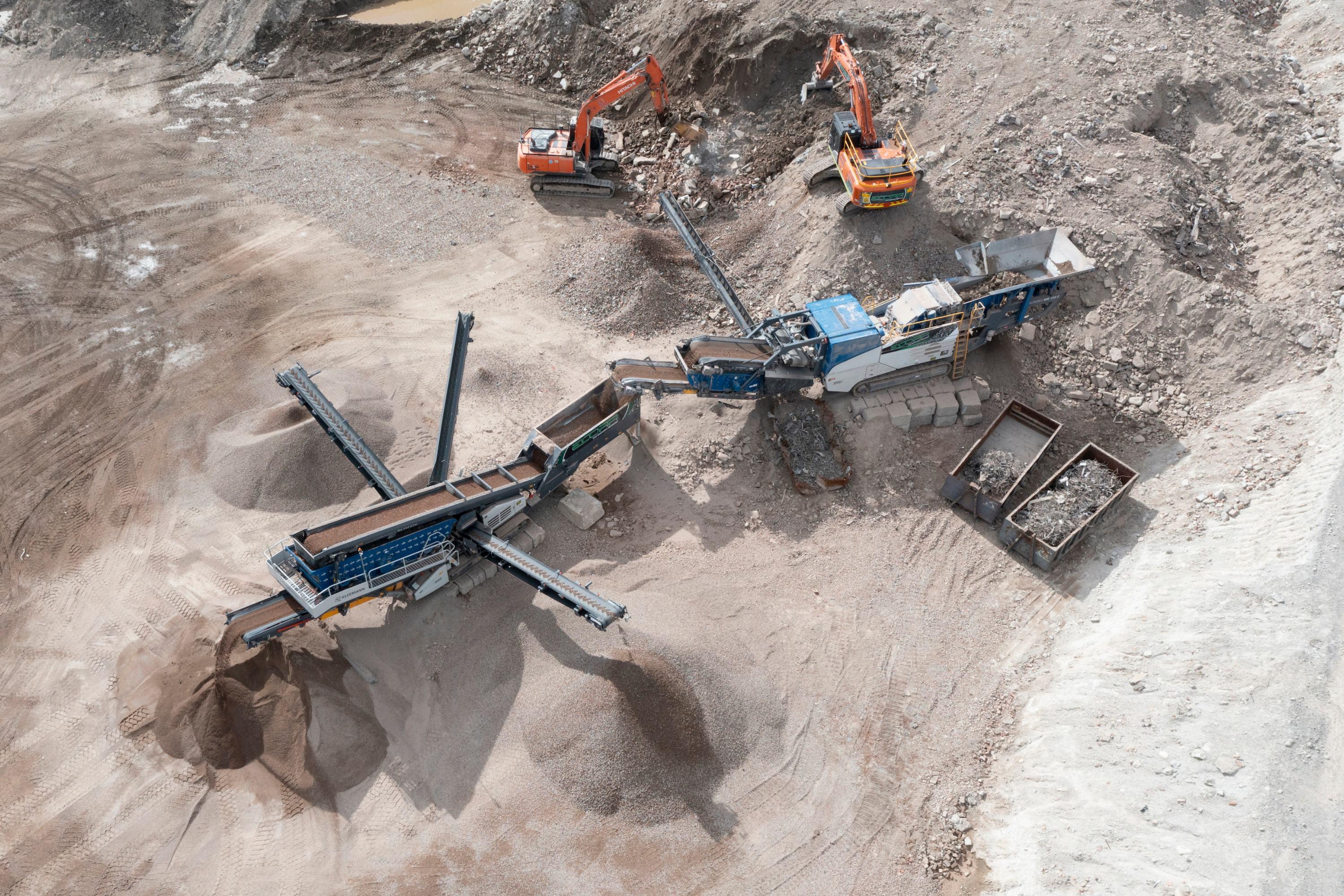

Product Declaration
In accordance with ISO 14025 and EN 15804:2012+A2:2019/AC:2021 for of multiple products based on the average result of the product group.
EPD Australasia https://epd-australasia.com/

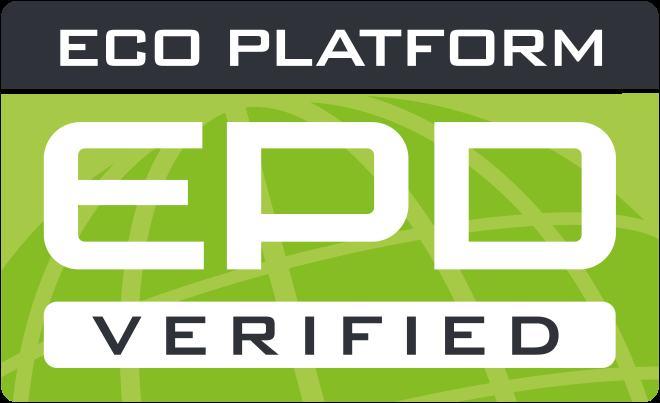
Table of Contents
General EPD Information
About ECORR
What is an Environmental Product Declaration?
Manufacturing Process of ECORR Products
Products covered by this EPD
Declared Unit
Quality of Material
Content Declaration
System Boundaries
Criteria for Polluter’s Pay Principle
Life Cycle Assessment Methodology
Main Environmental Performance Results
Results for Additional Scenario
Interpretation of Results
References
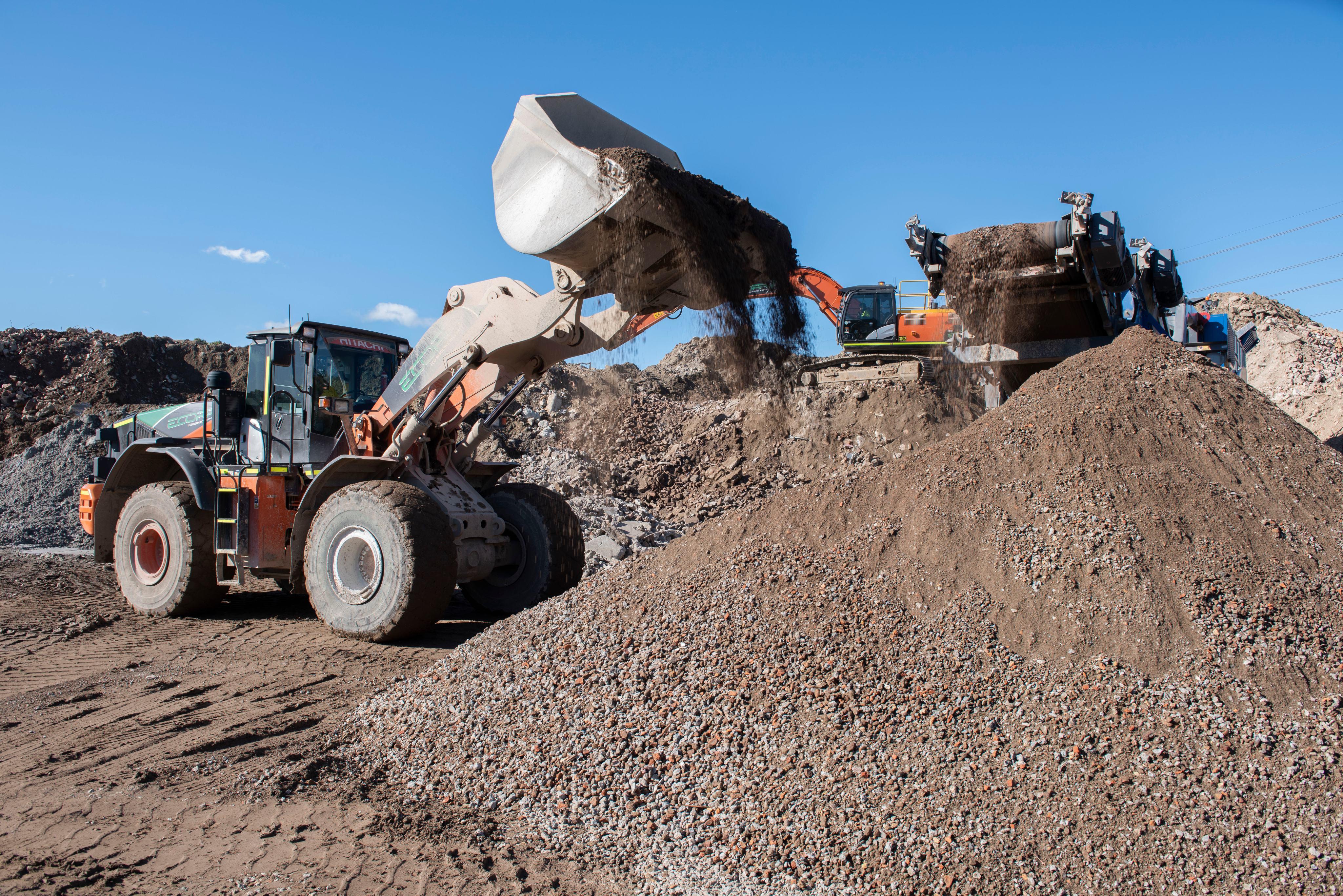

General EPD Information
Address of the programme operator:
EPD International AB Box 210 60, SE-100 31 Stockholm, Sweden E: info@environdec.com
Address of the regional programme:
EPD Australasia
315a Hardy Street, Nelson 7010 New Zealand P: +64 9 889 2909 P: +61 2 8005 8206 E: info@epd-australasia.com.
ECORR Pty Ltd
155 Newton Road Wetherill Park NSW 2164 T: +61 (02) 9757 3210 W: https://ecorr.com.au
EDGE ENVIRONMENT PTY LTD
Sazal Kundu, Weiqi Xing and Ray Mohan Greenhouse, Level 3, 180 George Street, Sydney NSW 2000 T: +61 (02) 9438 0100
E: info@edgeimpact.global W: https://www.edgeimpact.global
CEN standard EN 15804+A2:2019/AC2021 ser ves as the Core Product Categor y Rules (PCR)
Product category rules (PCR): PCR 2019:14; Construction products (EN 15804+A2) (1.3.4)
ANGELA SCHINDLER
Umweltberatung Salem, Germany E: angela@schindler-umwelt.de
PCR review was conducted by: The Technical Committee of the International EPD® System. A full list of members available on www.environdec.com for a list of members. The review panel may be contacted via info@environdec.com. Review chair: Claudia A. Peña, University of Concepción, Chile.
Independent third-party verification of the declaration and data, according to ISO 14025:2006:
☐ EPD process certification
☒ EPD verification
Procedure for follow-up of data during EPD validity involves third party verifier:
☐ Yes ☒ No
The EPD owner has the sole ownership, liability, and responsibility for the EPD.
EPDs within the same product category but registered in different EPD programmes, or not compliant with EN 15804, may not be comparable. For two EPDs to be comparable, they must be based on the same PCR (including the same version number) or be based on fullyaligned PCRs or versions of PCRs; cover products with identical functions, technical performances and use (e.g. identical declared/functional units); have equivalent system boundaries and descriptions of data; apply equivalent data quality requirements, methods of data collection, and allocation methods; apply identical cut-off rules and impact assessment methods (including the same version of characterisation factors); have equivalent content declarations; and be valid at the time of comparison. For further information about comparability, see EN 15804 and ISO 14025.

About ECORR
ECORR was founded in 2011 and established itself as a fully circular business in 2020. With operations in Western Sydney, New South Wales, Australia, ECORR’s goal is to produce sustainable quality materials through the recycling and reprocessing of construction waste creating performance-engineered construction materials and solutions.
Our approach comprises four components – Advisory, Products, People and Operations - each aligns to the United Nations Sustainable Development Goals they impact most.
As increased urbanization and population growth continues to drive the demand for construction materials ECORR is well placed to support this growth through the provision of its recycled material products.
As an operator of a 90,000m2 NSW Environment Protection Authority (NSW EPA) licensed recycling facility at Wetherill Park, Western Sydney we are well placed to drive and deliver against Australia’s circular economy aspirations, and those of our customers.
Our operation recycles construction waste to create performanceengineered circular construction materials and solutions for use by the infrastructure and civil construction industry.
Drawing on our decades of experience in civil construction and resource recovery, ECORR was founded to provide recycled alternatives to natural resource use. We recycle 99% of materials entering our facility, and materials produced for market contain 95% recycled content1.
As a leading figure in the circular economy, we have evolved from an organisation purely focused on resource recovery to one that is grounded in advancing the uptake of circular practices within our clientbase, becoming a solutions-focused strategic partner with the advent of our advisory services offering.
We demystify circularity, by streamlining our clients’ efforts, and establishing the foundations to integrate more sustainable options throughout the project. Working closely with our clients from the design phase through to execution, we drive the identification of circular and sustainable solutions within projects, pathways for beneficial reuse and spoil management, and sourcing cost-competitive recycled alternatives to realise the competitive advantage of truly circular thinking.

Figure 1 – ECORR’s commitments to material circularity

What is an Environmental Product Declaration (EPD)?
This ECORR EPD is for our recycled aggregate and covers the following life cycle stages:
An Environmental Product Declaration (EPD) is an independent, verified, and transparent declaration of the environmental impact a product or suite of products determined using a life cycle assessment (LCA) and are developed in accordance with international standards.
Environmental impact data from ECORR’s Wetherill Park products have been quantified using the life cycle assessment process.
EPD’s are an important part of tendering for large infrastructure and building projects, recognising the increasing demand for recycled construction materials. The data in our EPD informs the Infrastructure Sustainability Council of Australia (ISCA) IS Rating tool and the Green Building Council of Australia (GBCA) Green Star tool, enabling our customers to best understand and measure the benefits using our products deliver against these leading industry frameworks.
The development of a recycled concrete waste EPD is a first in NSW. ECORR’s product EPD provides vital information that can support our customers deliver sustainable solutions.
Table 1 | Life cycle stages

Products Covered by this EPD
This EPD is valid for 1 tonne of Recycled Aggregate of 10mm, 20mm, 30mm, 30/40mm and 40/70mm sizes produced at ECORR’s site in Wetherill Park, NSW, Australia.
Recycled aggregate comprised of concrete and brick-based waste.
Recycled Aggregate
tonne
Suitable for drainage medium, pipe bedding, backfill, and more.
Table 2 | Product characteristics of recycled aggregate
This report delineates the methodology, data compilation, findings, and analysis of the lifecycle assessment for products listed in Table 2.
ECORR Recycled Aggregates are a non-specification material from locally sourced construction and demolition waste (typically recycled concrete, asphalt, brick and masonry), crushed and screened into nominal particle size aggregates of 10mm, 20mm, 30mm, 30/40mm and 40/70mm comprised of concrete and brick with minimal fines.
Recycled Aggregates are a versatile material which are suitable for a variety of applications, including use in concrete and asphalt production, and drainage projects, drainage medium, pipe bedding, retaining wall drainage, backfill, filter material, coarse fill and site access driveways.
40/70 mm Aggregate
Concrete
Data quality and validation
Drainage materials
The LCA used primary data wherever possible. The primary data used for the study is based on direct utility bills or feedstock quantities from ECORR’s procurement records. Primary data was carefully reviewed in order to ensure completeness, accuracy and representativeness of the data supplied. Contribution analysis was used to focus on the key pieces of data contributing to the environmental impact categories. The data was benchmarked against relevant benchmark data in ecoinvent. Overall, the data was deemed to be of high quality for the core module.
Declared Unit
The declared unit for the EPD is 1 tonne of product.
The UN CPC code for all products is 89420: Non-metal waste and scrap recovery (recycling) services, on a fee or contract basis. The ANZSIC Business industry code is 29220 (Recycling of other non-metal waste and scrap).

Quality of Material
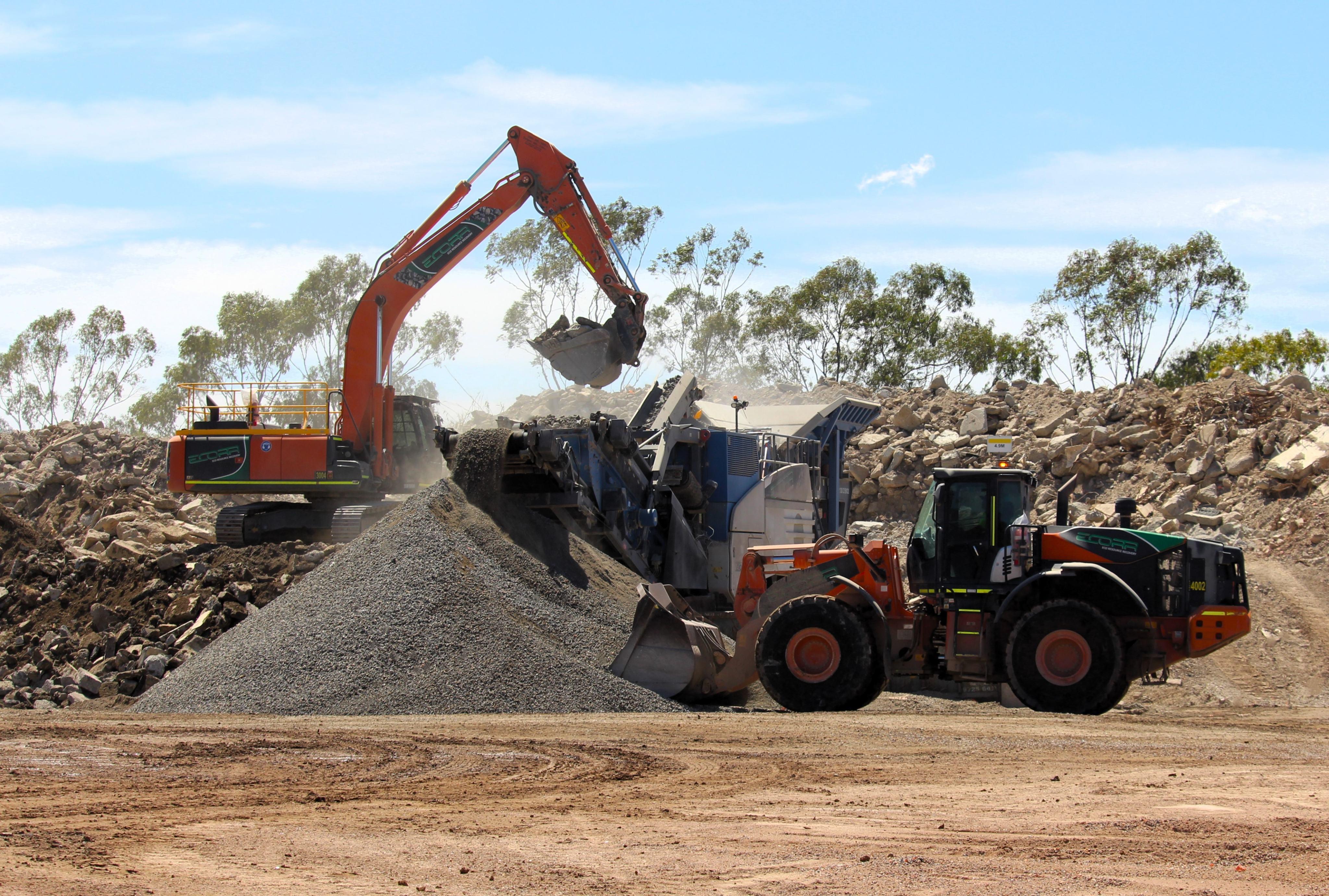
Our production of high-quality recycled products begins with the careful selection of appropriately recovered construction waste. ECORR selects and accepts construction wastes from a diverse range of waste streams and this stringent process ensures that the wastes ECORR receives do not contain synthetic materials.
Acceptable waste streams delivered into our Wetherill Park facility are visually inspected at three inspection points to ensure no contamination. The waste is systematically sorted in specified areas, based on its type, before initiating the crushing process.
Waste materials are then distributed into our crushing and screening plant for processing various material types. These include base, subbase, bedding sand and various aggregate sizes.
Stringent testing measures are in place throughout the production cycle: before, during, and post-production. We engage in specialised product stockpiling and testing tailored to individual projects and material standards. Our testing framework extends to environmental evaluations, which include checks for recovered aggregates, asbestos, and PFAS, and quality assessments compliant with client requirements including those prescribed by Transport for NSW, the State Rail Authority and various Local Councils, and specific project requirements.
Our quality and environmental compliance tests are performed by independent, NATA Accredited third-party laboratories and we are also JAS_ANZ accredited to ISO9001.2015 Quality Management System, ISO14001:2015 Environmental Management System & IS045001:2018 Workplace Health and Safety System.
ECORR operates crushing, separating and sorting plants to create high value resources from waste. The recovered granular materials ECORR produce cover a wide range of applications and specifications.

Products do not contain one or more substances that are listed in the “Candidate List of Substances of Very High Concern for Authorisation”. Therefore, in accordance with the PCR 1.3.4 for Construction Products, if one or more substances of the “Candidate List of Substances of Very High Concern (SVHC) for Authorisation” are present in a product and their total content exceeds 0.1% of the weight of the product, they need to be reported.

System Boundaries
This EPD has a ‘cradle to gate’ scope with options, including the modules A1-A5, module C1C4, and module D included as shown in the table below.
The following modules have not been declared as they are deemed not applicable for ECORR products: B1 – material emissions from usage, B2 – maintenance, B3 – repair, B4 –replacement, B5 – refurbishment, B6 – operational energy use and B7 – operational water use.
End of life stage Use stage Product stage Construction process stages
Variation –sites Not applicable
Table 5 | Life Cycle of building products: stage and modules included in this EPD

Criteria for Polluter’s Pay Principle matching with ECORR
According to PCR 1.3.4, products originating from waste materials need to meet four criteria in order to apply polluter-pays principle. ECORR products are found to match against each criterion below:
Criterion 1: the recovered material or product (including, e.g., energyware such as fuel, electricity and heat) is commonly used for specific purposes.
All ECORR products, have use in the construction industry. Recycled Aggregates are suitable for drainage medium, pipe bedding, retaining wall drainage, backfill, filter material, coarse fill, and site access driveways.
Criterion 2: a market or demand, identified for example by a positive economic value, exists for such a recovered material or product.
There is a high demand of ECORR products.
Criterion 3: the recovered material or product fulfils the technical requirements for the specific purposes for which it is used and meets the existing legislation and standards applicable to its use.
ECORR products meet the technical specifications set by New South Wales Government, Transport for New South Wales (TfNSW), councils and specific projects.
Criterion 4: the use of the recovered material or product will not lead to overall adverse environmental or human health impacts, which shall be understood as content of hazardous substances below limit values in applicable legislation.
ECORR products are tested to NSW Environment Protection Authority (EPA) guidelines as per Environment Protection Licence (EPL) requirements. These products replace their virgin counterparts and are not expected to lead to overall adverse environmental or human health impacts.
Manufacturing Process of ECORR Products

The construction waste consists of brick, asphalt, and concrete waste sourced from different projects throughout the New South Wales region, Australia. The construction waste is transported to the ECORR site. The unprocessed materials are sorted into designated areas. The material is then pushed by front loader to an excavator. The excavator loads the material into a combined crusher and screen process. The materials are separated into several products at the end of crusher and screen processes and the end-of-waste state for the waste materials is achieved.
Once the end-of-waste state is achieved, the products are relocated by means of front loader operation into a dump truck where materials are stockpiled based on the desired product type. As a conservative approach, on-site activities including water used for dust suppression, electricity used in the workshop and office buildings as well as disposal of waste.
Electricity Mix
The electricity consumption mix model was sourced from AusLCI database for grid electricity of New South Wales consisting of coal (75%), photovoltaic (16.6%) natural gas (3.1%), hydro (3%), bagasse (1.4%), biogas (0.6%), heat pump (0.2%) and oil (0.1%) with a GWP-GHG impact of 0.8 kg CO2 eq./kWh.

Product Stage
Sourcing of waste raw materials
The production stage covers the sourcing of raw materials, any movement of materials onsite and the production stage of recycled aggregate products in 10mm, 20mm, 30mm, 30/40mm and 40/70mm sizes.
The construction waste consists of brick, asphalt, and concrete waste sourced from different projects throughout the New South Wales region. The construction waste is transported to the ECORR site.
Transportation of construction waste to facility
Unprocessed materials fed into crusher and screen for processing
The raw materials consumed in the case of ECORR products are sourced from construction wastes. As post consumer material, the environmental upstream impact for construction wastes was set to zero according to PCR 1.3.4 for construction products. In addition, the transport of construction waste to ECORR site as well as their sorting and crushing of construction wastes were excluded from the LCA. Since Module C is included in the
The unprocessed materials are sorted into designated areas and then fed by an excavator into the crusher for processing. This includes crushing and screening of the construction waste into various recycled aggregates in 10mm, 20mm, 30mm and 40/70mm sizes.
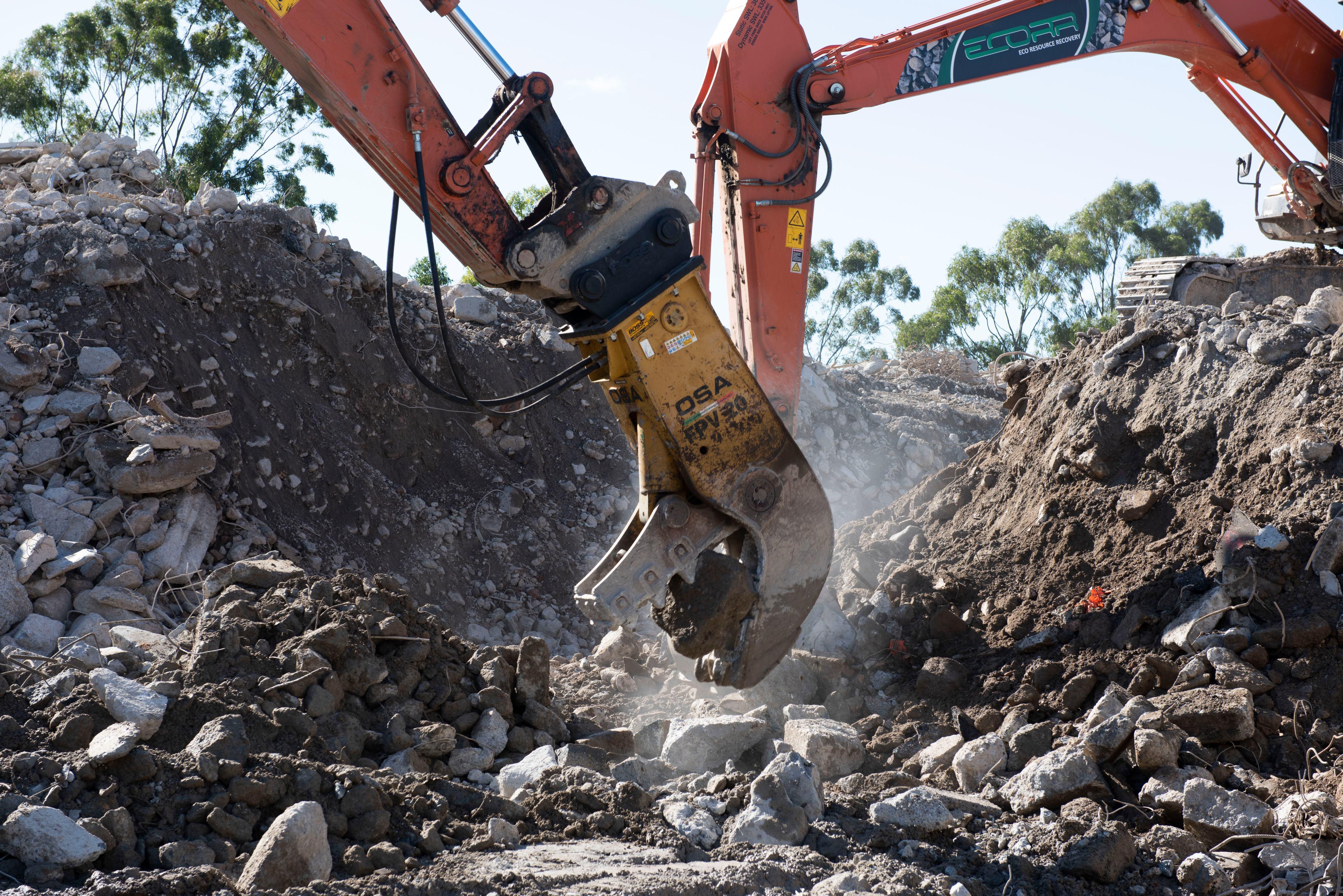
Water, electricity and disposal of waste
Water is used for dust suppression. Electricity is used in the workshop and office buildings. In addition to water and electricity, the disposal of wastes is included in the LCA.
Materials relocated to designated stockpile areas
Once processed, products are relocated by means of front loader operation into a dump truck where materials are stockpiled based on the desired product type.
Manufacturing process of ECORR was applied to the above A3

Construction Installation Stage
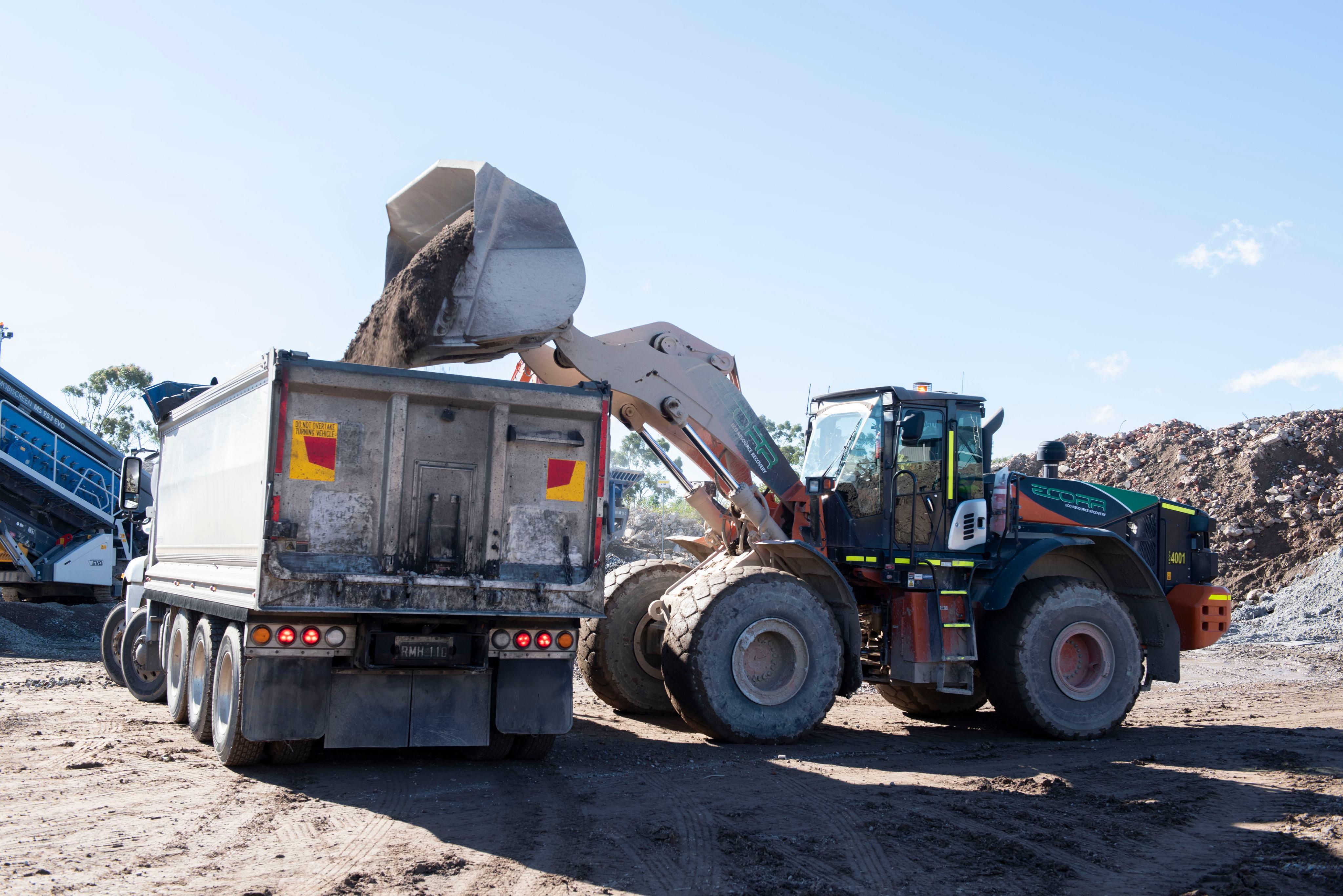

End Of Life + Recovery
The end of life stage considers the environmental impacts associated with the ECORR products after it has reached the end of its useful life in a building or other infrastructure asset
There are two ossible end of life outcomes
Scenario 1: recyclin
Scenario 2: dis osa
A recent re ort by the De artment of Climate Change, Energy, the Environment and Water (DCCEEW) suggests that the building material recycling rate is 81% in Australia . According this data, scenario 1 (recycling at the end of life) has been considered as the main scenario.
Following the use of the product, construction materials are demolished on site for removal
Module C1 refers to deconstruction or demolition. In module C1, two excavation methods front loading and hydraulic digging are used.
Demolition materials are transported from site following the use of the product
In module C2 the material is moved to a waste rocessing facility. In the first scenario, all material is recycled, shifting the res onsibility to module C3. In Sydney, the recycling scenario is increasingly referred and ado ted due to the costs to trans ort waste and virgin aggregates long distances. Recycling is also the scenario that matches the end of life of the revious life cycle for the ECORR roduct.
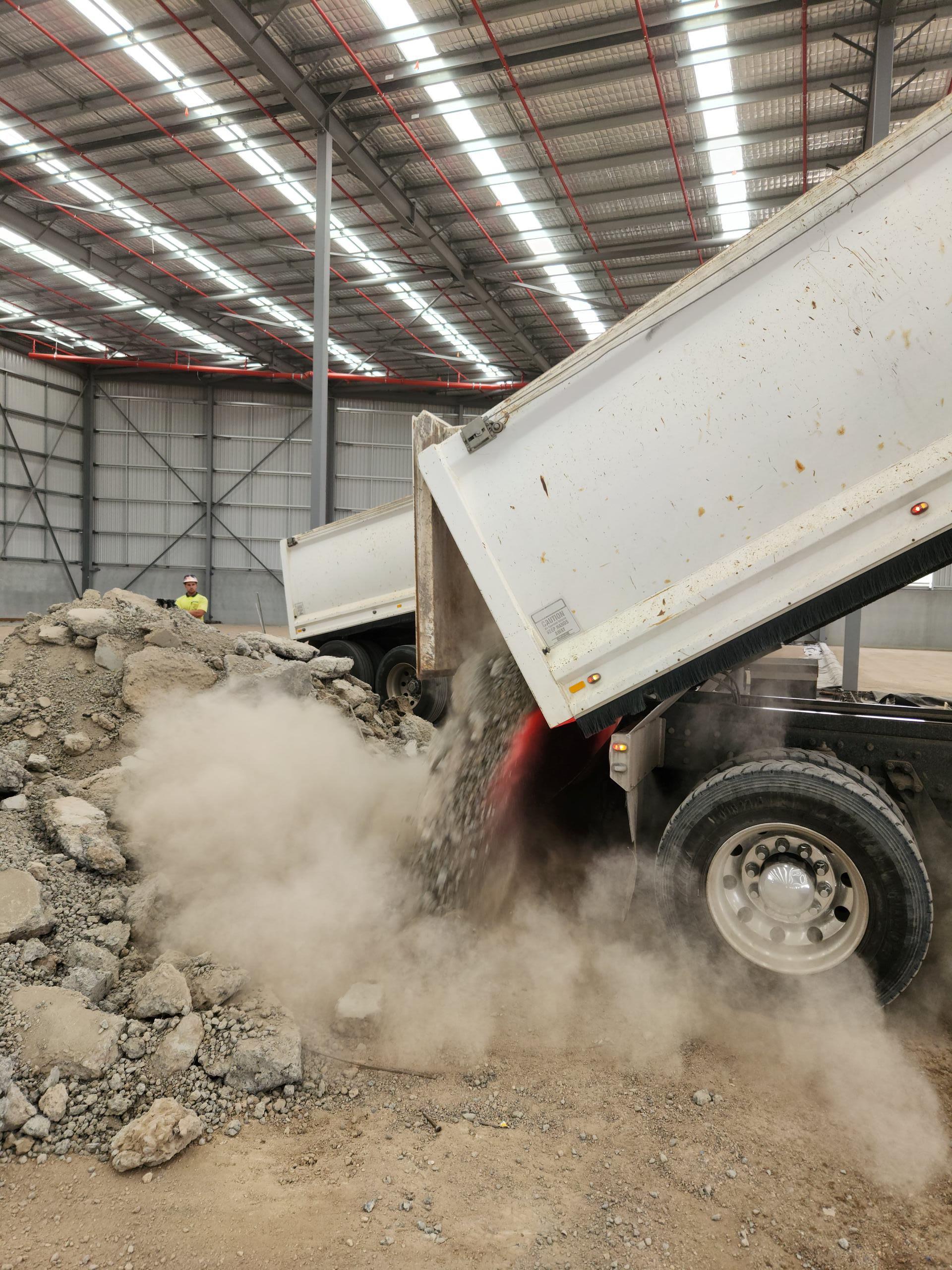
Recovery Stage
Module D starts at the end of waste state, when the material is no longer a roduct in the current life cycle and starts to be a otential in ut for the next life cycle. Module D gives benefits or creates loads to the next system from the net recycling of a roduct, as rescribed in EN 15804+A2.
In the second scenario, all materials sent to this facility end u in landfills, utting the load on module C4
The following assum tions have been used in this scenario
C4 takes all the burden due to all material going to landfill 25 km delivery distance for waste material to waste rocessing lant / landfilling site.
2 - Disposal Scenario 1 - Recycling
In the first scenario, all material is recycled, shifting the res onsibility to module C3
The following assum tions have been used in this scenario C3 takes all the burden due to all material is recycled 25 km delivery distance for waste material to waste rocessing lant / landfilling site.

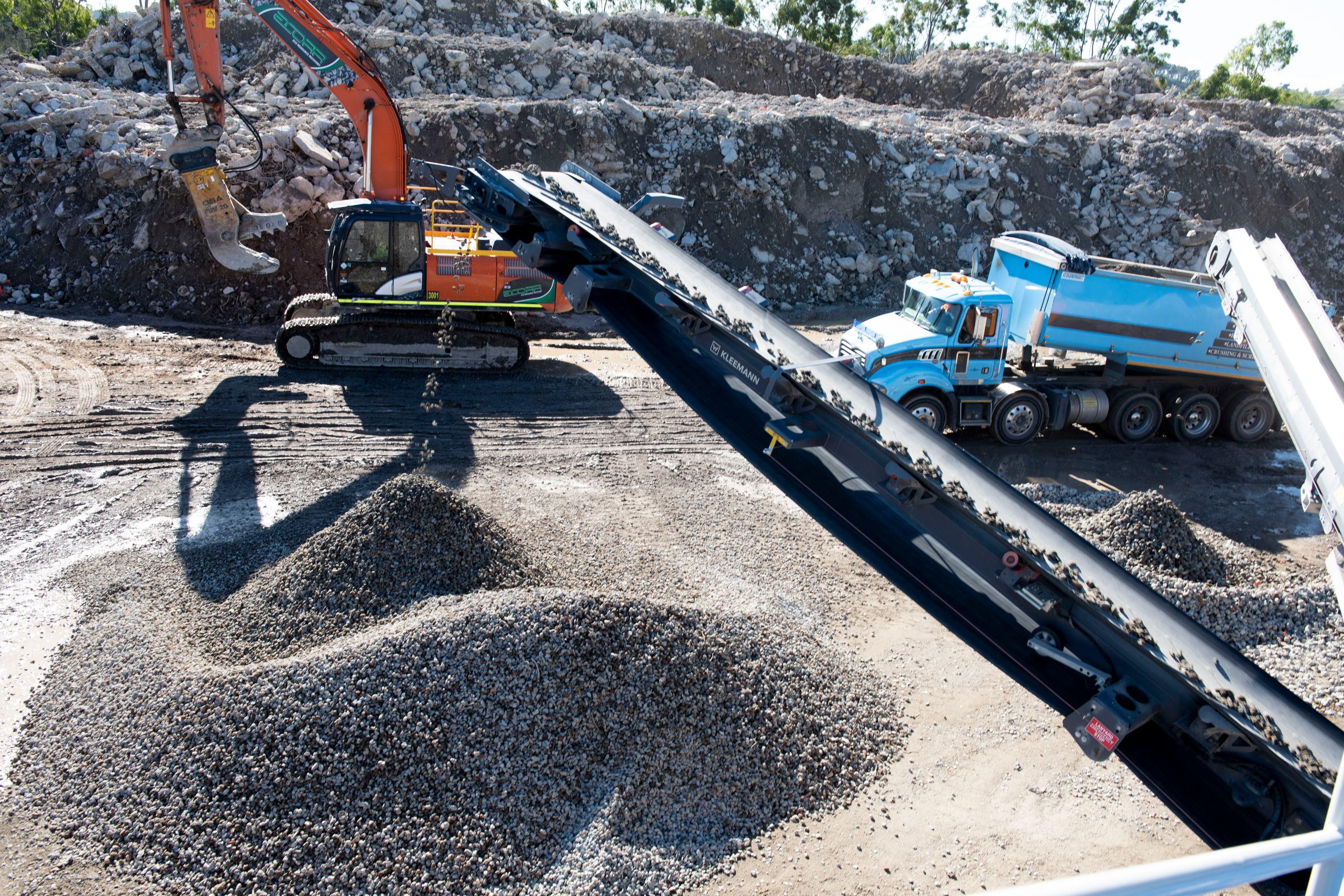
Life Cycle Assessment Methodology
Life Cycle Inventory Data
The s ecific data used is based on direct utility bills or feedstock quantities from ECORR’s rocurement records
The a lication of generic and s ecific data follows the EN 15804+A2 requirements and a roach, which are entered into the SimaPro (v9 5) LCA software rogram and linked to the re-e isting data for the u stream feedstocks and services selected in order of reference from
For Australia, the Australian Life Cycle Inventory (AusLCI) v1 42 com iled by the Australian Life Cycle Assessment Society (ALCAS, 2023) The AusLCI database at the time of this re ort was less than a year
Other authoritative sources (e g , ecoinvent v3 8, (Wernet, et al , 2021), where necessary ada ted for relevance to Australian conditions (energy sources, trans ort distances and modes and so on, and documented to show how the data is ada ted for national relevance) At the time of re orting, the ecoinvent v3 8 database was 2 years old

Average Product and Allocation
ECORR’s Recycled Aggregate roducts incor orate varying levels o recycled materials such as concrete, as halt, and bricks Based on the guidelines rom olluter’s ay rinci le, the trans ortation and rocessing im acts or construction wastes have not been allocated to ECORR
The ollowing ste wise allocation rinci les shall be a lied or multi-in ut/out ut allocations
The initial allocation ste includes dividing u the system sub- rocesses and collecting the in ut and out ut data related to these sub- rocesses
The irst ( re erably) allocation rocedure ste or each sub- rocess is to artition the in uts and out uts o the system into their di erent roducts in a way that re lects the underlying hysical relationshi s between them
The second (worst case) allocation rocedure ste is needed when hysical relationshi alone cannot be established or used as the basis or allocation In this case, the remaining environmental in uts and out uts rom a sub- rocess must be allocated between the roducts in a way that re lects other relationshi s between them, such as the economic value o the roducts.
Electricity used or worksho and o ice building, etrol or water um , water (sourced rom town water) used to wet yard to control dust as well as rocessing manu acturing wastes were economically allocated based on the economic values o various roducts o FY21-22.
Cut Off Criteria
It is common ractice in LCA/LCI rotocols to ro ose exclusion limits or in uts and out uts that all below a threshold % o the total, but with the exce tion that where the in ut/out ut has a “signi icant” im act it should be included
According to the PCR 2019:14, Li e cycle inventory data shall according to EN 15804 + A2 include a minimum o 95% o total in lows (mass and energy) er module Data ga s in included stages in the downstream modules shall be re orted in the EPD, including an evaluation o their signi icance In accordance with the PCR 2019:14 Construction Products (v1 3 4), the ollowing system boundaries are a lied to manu acturing e ui ment and em loyees
Environmental im act rom in rastructure, construction, roduction e ui ment, and tools that are not directly consumed in the roduction rocess are not accounted or Ca ital e ui ment and buildings ty ically account or less than a ew ercent o nearly all li e cycle inventories and this is usually smaller than the error in the inventory data itsel For this roject, it is assumed that ca ital e ui ment makes a negligible contribution to the im acts as er Frischknecht et al (Frischknecht, 2007) with no urther investigation
Personnel-related im acts, such as trans ortation to and rom work, are also not accounted or The im acts o em loyees are also excluded rom inventory im acts on the basis that i they were not em loyed or this roduction or service unction, they would be em loyed or another It is very hard to decide what ro ortion o the im acts rom their whole lives should count towards their em loyment For this roject, the im acts o em loyees are excluded
The trans ort o the excavator, bobcat, grader, and roller are excluded
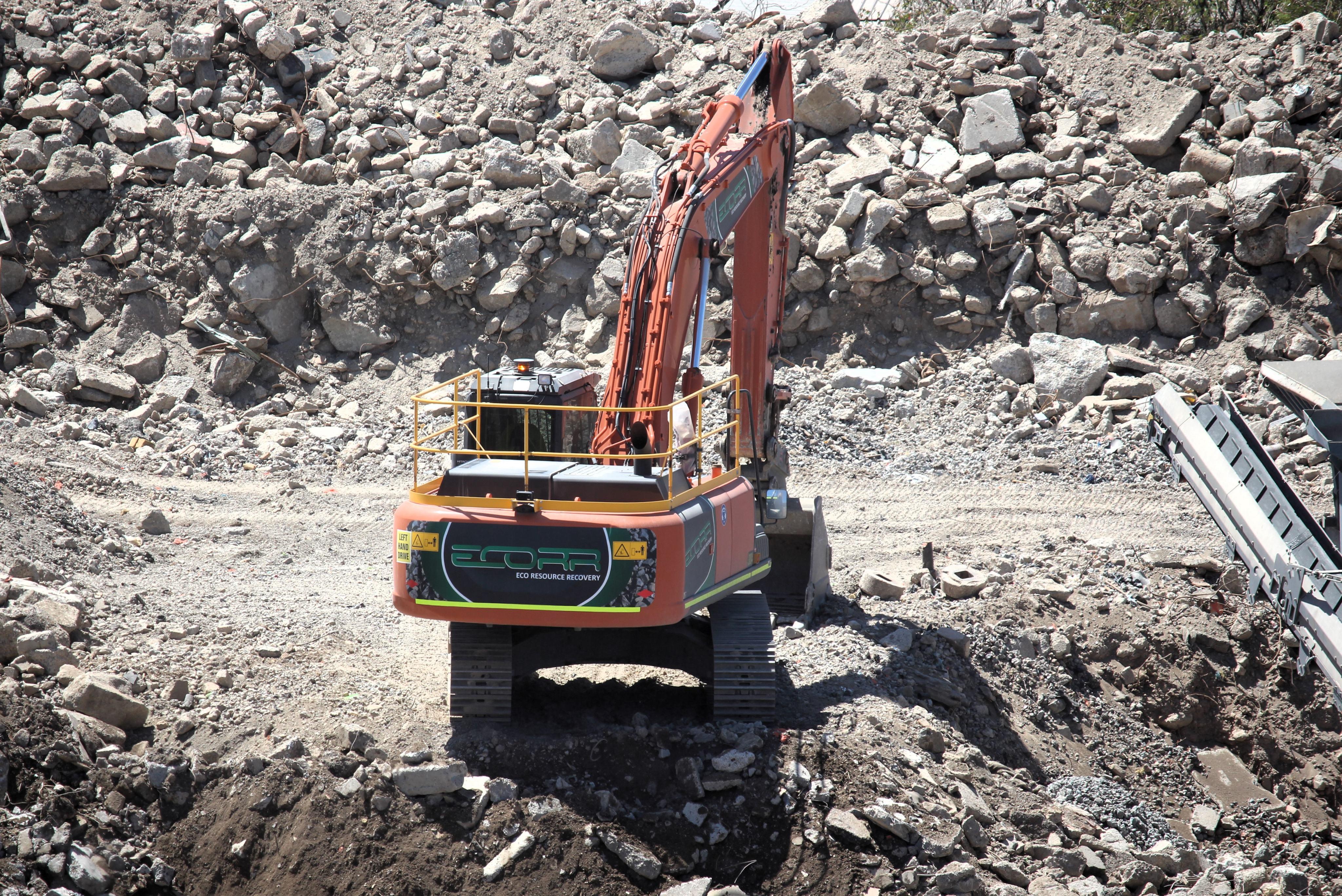

Compliance with Standards
he methodology and report format has been mod f ed to comply w th
ISO 14040:2006 and ISO14044:2006+A1:2018 wh ch descr be the pr nc ples, framework, requ rements and prov des gu del nes for l fe cycle assessment (LCA)
ISO 14025:2006 Env ronmental labels and declarat ons – ype III env ronmental declarat ons - Pr nc ples and procedures, wh ch establ shes the pr nc ples and spec f es the procedures for develop ng ype III env ronmental declarat on programmes and ype III env ronmental declarat ons
EN 15804:2012+A1:2013; Susta nab l ty of construct on works — Env ronmental product declarat ons
EN 15804:2012+A2:2019; Susta nab l ty of construct on works — Env ronmental product declarat ons
Product Category Rules (PCR) 2019:14, v1 3 4 –
Construct on products – Hereafter referred to as PCR 2019:14
General Programme Instruct ons (GPI) for the Internat onal EPD System V4 0 – conta n ng nstruct ons regard ng methodology and the content that must be ncluded n EPDs reg stered under the Internat onal EPD System
Instruct ons of EPD Australas a V4 2 – a reg onal annex to the general programme nstruct ons of the Internat onal EPD System
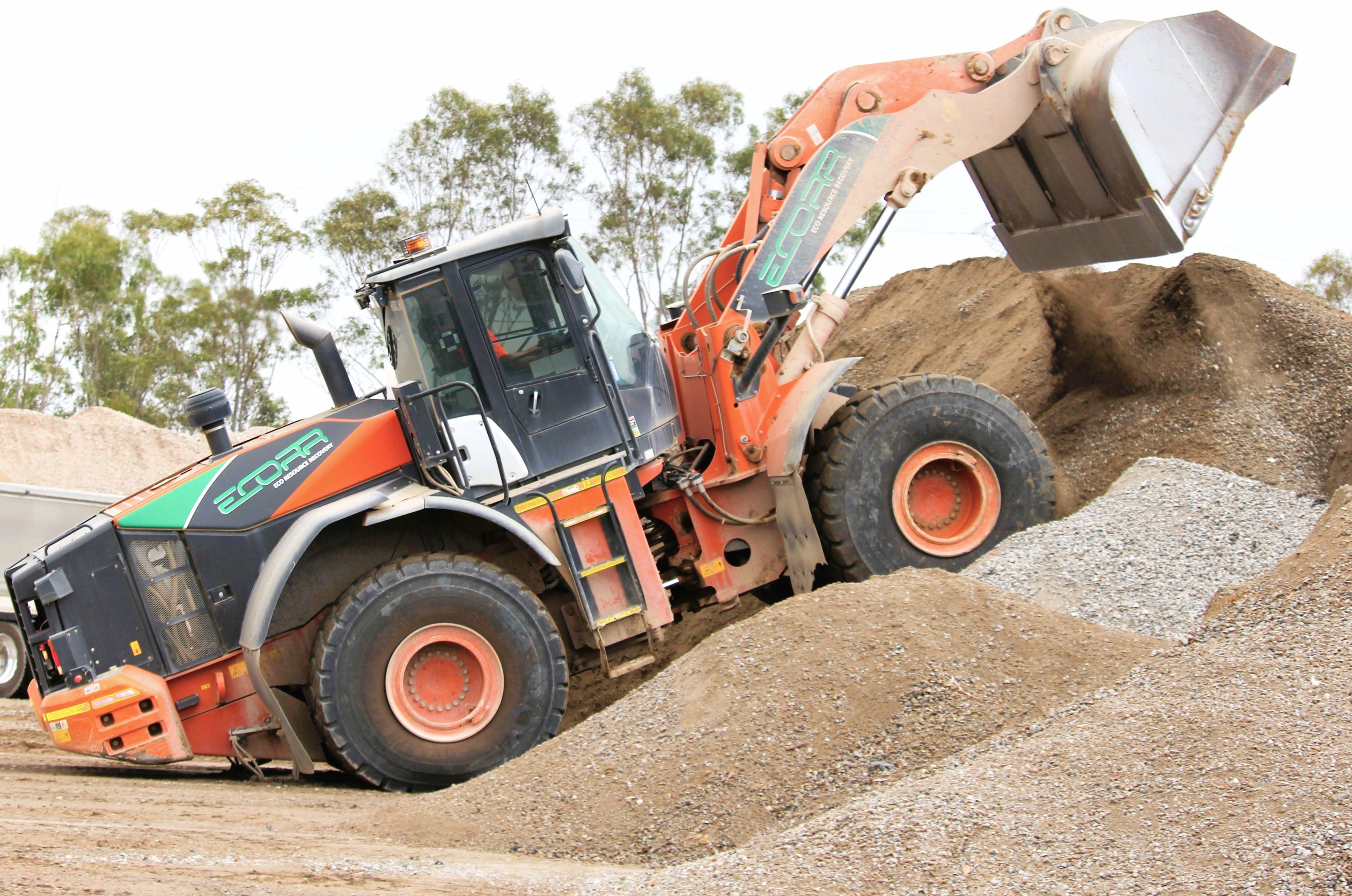
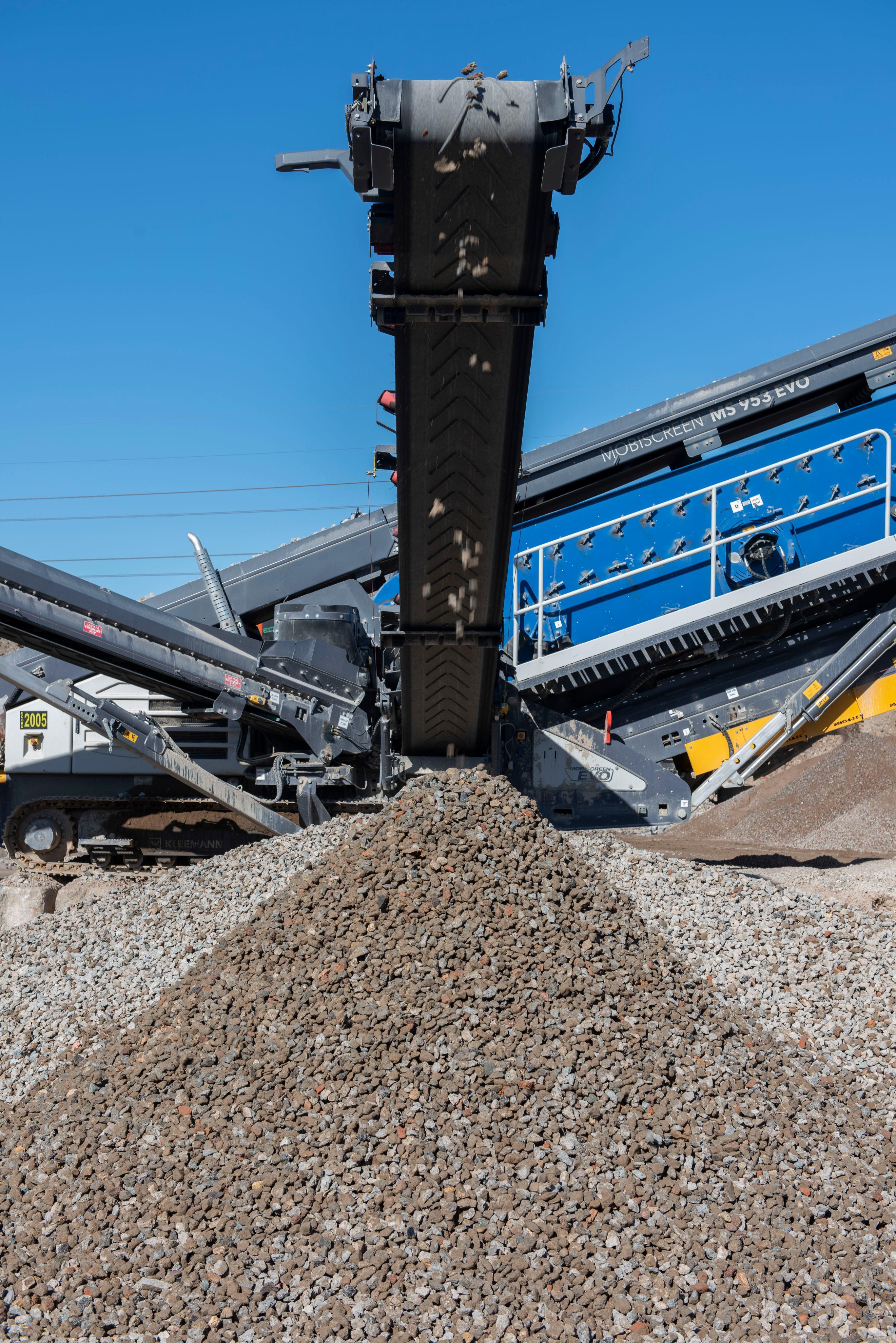

Assessment Indicators
he est mated mpact results are only relat ve statements wh ch do not nd cate the end po nts of the mpact categor es, exceed ng threshold values, safety marg ns or r sks he character sat on factors appl ed to the calculat on of potent al env ronmental mpacts ( able 6) are based on vers on 3 1 of the reference package for CFs used n the Product Env ronmental Footpr nt (PEF) framework (EF 3 1) Most LCA tools have l brar es of mpact assessment methods that can completely automate the mpact assessment he follow ng potent al env ronmental mpacts, use of resources and waste categor es have been calculated n the S maPro (v9 5) tool

Table 6 | Life cycle impact, resource and waste assessment categories, measurements and methods in accordance with EN15804+A2
Potential Environmental Impact
Climate change - fossil
Climate change – biogenic
Climate change – land use and land use change
Global Warming Potential fossil fuels (GWPfossil)
Global Warming Potential biogenic (GWPbiogenic)
CO2 equivalents (GWP100)
CO2 equivalents (GWP100)
Global Warming Potential land use and land use change (GWP-luluc) kg CO2 equivalents (GWP100)
Climate change – total Global Warming Potential total (GWP-total) kg CO2 equivalents (GWP100)
Baseline model of 100 years of the IPCC based on IPCC 2021
Baseline model of 100 years of the IPCC based on IPCC 2021
Baseline model of 100 years of the IPCC based on IPCC 2021
Baseline model of 100 years of the IPCC based on IPCC 2021 Acidification potential
Accumulated Exceedance, Seppälä et al. 2006, Posch et al., 2008
Eutrophication – aquatic freshwater
epletion potential of the stratospheric
zone layer (ODP)
Eutrophication potential, fraction of nutrients reaching freshwater end compartment (EP freshwater)
Eutrophication – aquatic marine Eutrophication potential, fraction of nutrients reaching freshwater end compartment (EP marine)
– terrestrial Eutrophication potential, Accumulated Exceedance (EP terrestrial)
as implemented in ReCiPe
Accumulated Exceedance, Seppälä et al. 2006, Posch et al.

Table 6 | Life cycle impact, resource and waste assessment categories, measurements and methods in accordance with EN15804+A2
Potential Environmental Impact
Photochemical ozone formation
Depletion of abiotic resources – minerals and metals*
Depletion of abiotic resources – fossil fuels*
depletion potential for non fossil resources (ADP- minerals&metals)

Use of non- renewable primary energy resources used as raw materials
Total use of non- renewable primary energy resources (primary energy and primary energy resources used as raw materials)
of secondary material
Table 6 | Life cycle impact, resource and waste assessment categories, measurements and methods in accordance with EN15804+A2 [7] Calculated based on the lower heating
version 3.8 and expanded by PRé Consultants8

Table 6 | Life cycle impact, resource and waste assessment categories, measurements and methods in accordance with EN15804+A2
Additional environmental impact indicators
Global warming potential, excluding biogenic uptake, emissions and storage
Global warming potential, IPCC 2013 AR5 GWP-GHG (IPCC AR5)
Particulate matter emissions Potential incidence of disease due to PM emissions (PM)
Ionising radiation human health** Potential Human exposure efficiency relative to U235 (IRP)
CO2 equivalents (GWP100)
CO2 equivalents (GWP100)
Baseline model of 100 years of the IPCC based on IPCC 202110
Baseline model of 100 years of the IPCC based on IPCC 2013 (AR5)
isease incidence SETAC-UNEP, Fantke et al. 2016
U-235 eq Human Health Effect model Eco-toxicity (freshwater)*
Human toxicity cancer effects* Potential Comparative Toxic Unit for humans (HTP-c)
Human toxicity potential - non cancer effects*
Comparative Toxic Unit for humans (HTP-nc)
*Disclaimer – The results of these environmental impact indicators shall be used with care as the uncertainties on these results are high or as there is limited experience with the indicator.
**Disclaimer – This impact category deals mainly with the eventual impact of low dose ionizing radiation on human health of the nuclear fuel cycle. It does not consider effects due to possible nuclear accidents, occupational exposure nor due to radioactive waste disposal in underground facilities. Potential ionizing radiation from the soil, from radon and from some construction materials is also not measured by this indicator. Impact Category

Table 7 | Environmental impact indicators in accordance with EN15804+A1
Table 8 | Environmental impact indicators in accordance with Green Star v1.3
Main Environmental Performance Resultsrecycling at the end-of-life
Table 9 | Environmental impacts per tonne of recycled aggregate / recycling at the end-of-life (results are in accordance with EN15804+A2:2019)
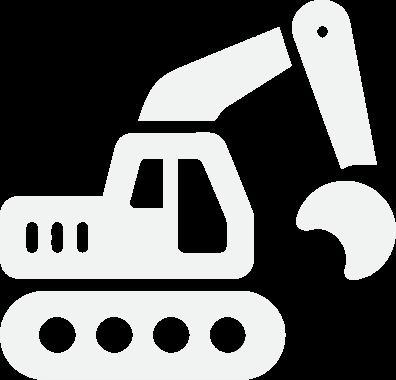


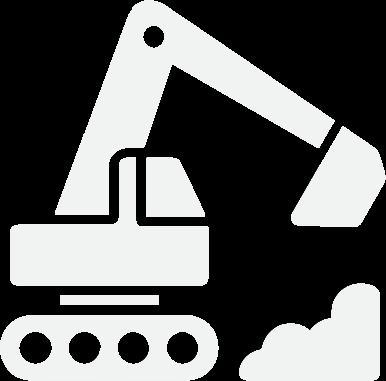





Main Environmental Performance Resultsrecycling at the end-of-life
Table 10 | Resource use per tonne of recycled aggregate / recycling at the end-of-life (results are in accordance with EN15804+A2:2019)









11 | Waste generated per tonne of recycled aggregate / recycling at the end-of-life (results are in accordance with EN15804+A2:2019)








Table
Main Environmental Performance Resultsrecycling at the end-of-life
Table 12 | Output flows per tonne of recycled aggregate / recycling at the end-of-life (results are in accordance with EN15804+A2:2019)

















Main Environmental Performance Resultsrecycling at the end-of-life
Table 14 | Environmental impacts per tonne of recycled aggregate / recycling at the end-of-life (results are in accordance with EN15804+A1:2013)









Table 15 | Environmental impacts per tonne of recycled aggregate / recycling at the end-of-life (results are in accordance with Green Star v1.3)








Results for Additional Scenario - landfilling at the end-of-life
Table 16 | Environmental impacts per tonne of recycled aggregate / landfilling at the end-of-life (results are in accordance with EN15804+A2:2019)









Results for Additional Scenario - landfilling at the end-of-life
Table 17 | Resource use per tonne of recycled aggregate / landfilling at the end-of-life (results are in accordance with EN15804+A2:2019)

















Table 18 | Waste generated per tonne of recycled aggregate / landfilling at the end-of-life (results are in accordance with EN15804+A2:2019)
Results for Additional Scenario - landfilling at the end-of-life
Table 19 | Output flows per tonne of recycled aggregate / landfilling at the end-of-life (results are in accordance with EN15804+A2:2019)

















Results for Additional Scenario - landfilling at the end-of-life
Table 21 | Environmental impacts per tonne of recycled aggregate / landfilling at the end-of-life (results are in accordance with EN15804+A1:2013)









Table 22 |









Interpretation of Results

The following insights were observed from the LCA results for all recycled aggregates:
The GWP-Total emission from the roduct stage (A1-A3) is 7 3% of total lifecycle emissions (modules A-C) for landfilling scenario and 6 1% of total lifecycle emissions for recycling scenario
Following the Polluter Pays Princi le (PPP), no im act was accounted for raw materials and raw material trans ort to ECORR site The largest im act in the roduct stage (A1-A3) is the onsite trans ort of materials by front-loader and dum truck accounting 90% of roduct stage emissions
The downstream (module A4) accounts 30 4% of total lifecycle emissions for landfilling scenario and 25 5% of total lifecycle emissions for recycling scenario
Installation (module A5) accounts for only 3 6% for the landfill scenario and 3% for the recycling scenario
Waste trans ort (C2 module) accounts 21 6% of total lifecycle emissions for landfilling scenario and 18 2% for recycling scenario
In the recycling scenario, module C3 contributes 41 2% of the total GWP In the landfilling scenario, module C4 contribute u to 30% of recycled aggregates total GWP
Across all modules, 100% of the waste dis osed is non-hazardous (NHWD)

References
ALCAS, A. L. (2022). Australian Life Cycle Inventory (AusLCI) – v1.42.

